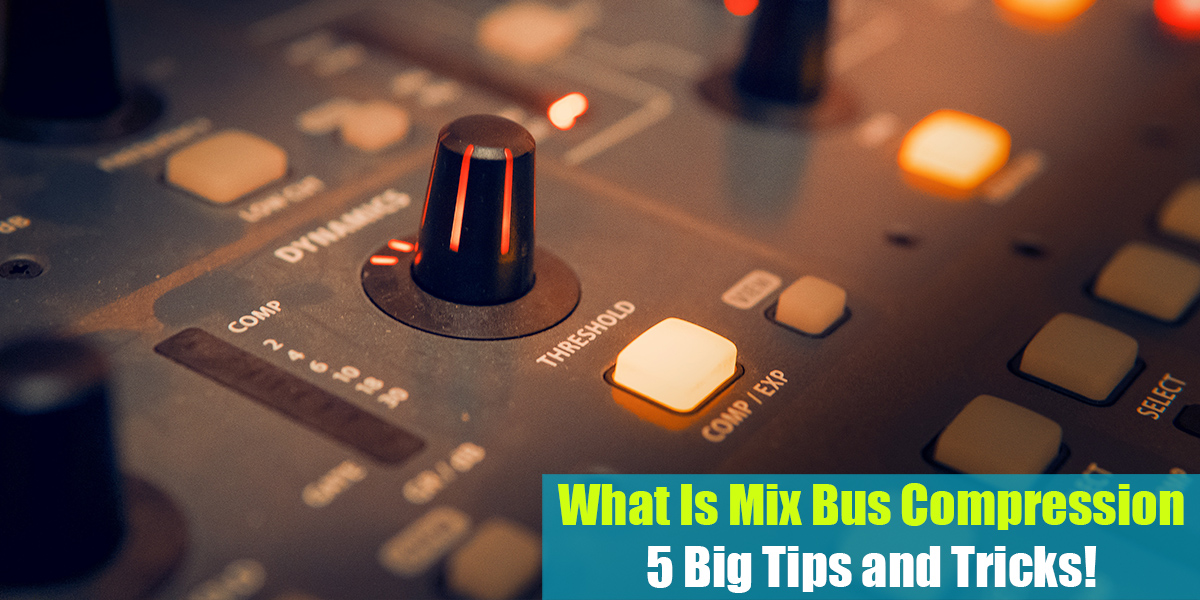What is FET Compressor
Introduction
Welcome, everyone! If you’re here, you’re probably interested in learning about FET compressors. As you may already know, there are four basic types of compressors: Variable Mu, VCA, Optical (or Opto), and the star of this article—the FET compressor.
So, what kind of compression does a FET compressor produce? Compressors using Field Effect Transistor (FET) technology are designed to emulate the warmth of tube-style compression. FET compressors are known for being fast and efficient, quickly clamping down on transients, which makes them perfect for drums, bass, guitar, vocals, and any other sounds that need extra aggression and punch.
FET compressors are also excellent for parallel compression. In this technique, a duplicate vocal track is heavily compressed before being mixed back in with the original, adding presence and thickness. When you want to add character or color to your sound, a FET compressor is a fantastic choice.
If you’re dealing with any situation that needs a bit of aggression, a FET compressor can be very useful. For example, it can make heavy rock guitars sound even more powerful and prominent by adding warmth and edge.
If you want your bass to have a bit more bite, a FET compressor can do the trick. In general, FET compressors are known for giving your sound extra punch and energy.
Here’s a simple technical explanation: the audio signal first enters the source terminal of the FET. It then passes through the body of the FET and comes out at the drain terminal. The current flow through a FET is controlled by the voltage at the gate terminal. When the gate is at a low voltage, the FET offers high resistance, which restricts the current and reduces the audio signal’s level. In this way, FETs work as voltage dividers to control the compression.
That’s a bit of the technical side for those who are interested. However, the most important thing to remember is knowing when and where to use this type of compression. Using the right tool for the job will help you get the best possible sound.
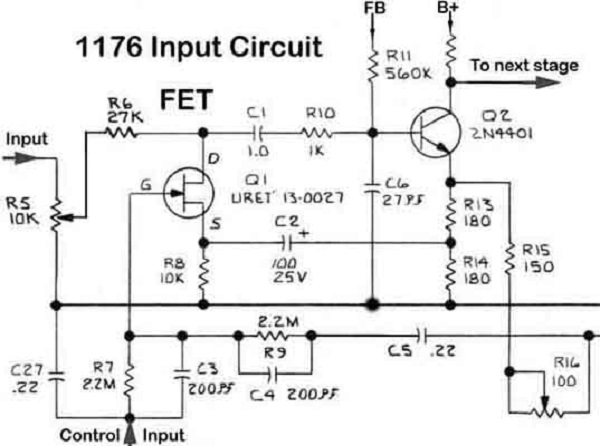
Here are some common uses of FET compression in mixing, along with some basic starting points for the signals we worked with. For your reference, we used the CLA-76 plugin by Waves and applied these settings to our signals. These might work well for you too, but remember to experiment with different settings to find what best suits your needs.
For vocals, you can choose whether the plugin hums at 50Hz (UK mains) or 60Hz (US mains) using the Analog buttons, but we typically leave this feature off. FET compressors are known for their aggressive character, so we set the attack to 5 and listen for onset clicks before proceeding. To achieve the fastest release, we set the release to 1.
On the CLA-76, keep in mind that the attack and release controls work in reverse: 1 is the slowest and 7 is the fastest. We set the ratio to 12 for our purposes. Although it’s tempting to press the All button to emulate the hardware trick of activating all ratio buttons for a “nuke” effect, we avoid this since it isn’t suitable for vocals here. With these settings, the vocal takes on a consistent character—full and rich.
For guitar, we use FET compression to tame spiky transients and increase sustain, so notes ring out until the next chord change. Set the input level to -3dB to drive more signal into the compressor, and use a 20:1 ratio to achieve a threshold of -12dBFS. We set the attack to 3, which maintains the crispness of the strum while controlling unwanted spikes.
When compressing piano, FET compression works particularly well for lo-fi, classical, and jazz settings. We use a ratio of about 4:1 and set the attack to 6. For the fastest possible release, turn the release knob to 7 or set it to 50 milliseconds. We set the hum at 60Hz to match the frequency of the original hardware.
With FET compression, piano notes ring out longer and gain a touch of subtle distortion. Listen closely to the bass notes to notice the analog character. The ultra-fast attack of a FET compressor makes it perfect for this application. Here, we set the input gain to -12dB. If the sound becomes too colorful, feel free to dial the settings back for a more subtle effect.
We’ve just covered the basics of FET compression, giving you enough information to decide whether this type of compressor is right for your mixing needs. Chances are, you’ll find it essential at some point! If you’re ready to explore your options, below you’ll find a list of hardware models to consider, along with some VST plugin versions for mixing in the box. Let’s dive into our brief reviews.
Top 5 Best FET Compressor Choices!
Universal Audio 1176LN Classic Limiting Amplifier
Thanks to their enormous popularity, these units remain a benchmark for function, form, and sound—even today, players and instrument makers return to them time and again. The 1176LN is a unit every audio engineer recognizes and praises for its outstanding FET compression—it’s truly a beast!
First, the compressor has a fixed threshold. In other words, the input level is set by the input potentiometer, which controls how much the signal exceeds the threshold. As you increase the input volume, more signal pushes through, and you get less level reduction. The output potentiometer then sets your final output level.
You can fine-tune the compression using the attack and release knobs (which, as many know, run “backwards,” with the fastest times on the right). There are also four ratio switches: 4:1, 8:1, 12:1, and 20:1.
Handbuilt and faithful to Bill Putnam Sr.’s original visionary design, Universal Audio’s 1176LN Classic Limiting Amplifier was a key component on records by legends like Led Zeppelin, The Rolling Stones, and Michael Jackson.

- Height: 3.5″
- Depth: 12.25″
- Width: 19″
- Weight: 11 lbs.
| IMAGE | PRODUCT | For US Customers |
Amazon Store |
|---|---|---|---|
Universal Audio 1176LN Classic Limiting Amplifier |
Serpent Splice MkII FET Compressor
The Serpent Audio Splice MkII delivers four-in-one compressor functionality, complete with customizable audio path circuitry. With selectable input and output modes, plus Blackface and Blue Stripe options, it offers a wide range of tonal possibilities. Its ALL-in mode faithfully recreates the effect of the original FET limiters that inspired its design.
However, the Splice MkII is far more than a simple 1176 clone; it features a suite of valuable upgrades that set it apart from the competition. For starters, a front-panel switch allows for external insert points with send and return options. For parallel compression, there’s a Mix/Blend control with a switchable bypass. You also get a switchable 600-ohm output load and active side-chain filters, making the Splice versatile enough for both modern and vintage setups.
The Link function also brings something special: in mono mode, it raises the compressor threshold by 6 dB, allowing you to push the input transformer into higher saturation before compression kicks in. For example, this can add a rich sonic character to rock vocals.
If you’re searching for a high-performance FET compressor, the Serpent Audio Splice MkII should definitely be on your shortlist.

- Side Chain Inserts: Yes
- Other I/O: 2 x 1/4″ (in/out stereo link)
- Rack Spaces: 2U
- Power Source: Standard IEC AC cable
| IMAGE | PRODUCT | For US Customers |
|---|---|---|
Serpent Splice MkII FET Compressor |
Drawmer 1973 Multiband FET Stereo Compressor
The system uses a set of crossover filters to split the audio signal into three separate frequency bands. After this split, each band goes through its own compressor, which can be adjusted independently. Once the signals have been compressed, they are combined and the final mix and levels are adjusted. The main advantage of this method is that compressing one band does not affect the others in any way.
This feature, along with several others, allows the 1973 to achieve results that a single-band compressor cannot. For example, when processing an acoustic guitar, cello, or double bass, you can prevent low notes from sounding boomy without making the high notes too thin.
If you record a vocal track that sounds too shrill, the 1973 makes it easy to change the timbre without losing detail. To add thickness and richness to a voice, you can apply heavier compression to the bass band. The mid band lets you control how raspy the vocal sounds, while compressing the high band can add sizzle and definition to a dull voice. Sibilance can also be controlled easily.
During mastering, the ability to shape each band independently helps fix problem mixes. You can bring out individual instruments, brighten the mix, and make the low end sound huge. All of this can be done while avoiding “pumping” or “breathing” artifacts, and giving you more headroom.

- VU meter
- Format: 19″/ 2 U
- Dimensions (W x H x D): 482 x 132 x 315 mm
- Weight with packaging: 9.7 kg
| IMAGE | PRODUCT | For US Customers |
For EU Customers |
|---|---|---|---|
Drawmer 1973 Multiband FET Stereo Compressor |
Chandler Limited Germanium Compressor
In addition to using the same all-class A amplifier found in the Germanium Pre and Tone Control, the Germanium Comp is transformer-balanced both in and out. FETs are used for gain reduction in the compression circuit, but with all the clever tricks and flexibility you’d expect from the Germanium lineup.
Alongside the wet/dry mix for “submixing” tracks within the compressor, there’s also a Comp Curve control, which selects the knee through various diode combinations, a clean/dirty compression option, and a sidechain filter. Many parameters in the Germanium Comp were intentionally set by listening to studio recordings, rather than relying solely on test equipment.
Despite its vintage look, the Germanium Comp feels solid and well-built—exactly as you’d hope. It immediately impresses with a very warm, valve-like sound, emphasizing the bottom end of the audio spectrum. The sound is slightly thickened and compressed.
The Feedback control on the Chandler Limited Germanium Compressor adjusts how much signal is fed back from the output to the amplifier’s input. This knob also functions as a volume control and shapes the tone of the unit. Turning the knob to the left lowers the volume and harmonic distortion, while increasing the presence of high frequencies.
Turning the volume knob to the right increases harmonic distortion and creates a low-end peak around 30 Hz. If you’re always searching for unique and better sounds, the Germanium Compressor’s Feedback control will become your secret weapon.
We believe the Germanium Compressor is likely the first of its kind—a new genre of compressor that combines simplicity with effectiveness. This unit will immediately enhance any engineer’s skill level when it comes to compression.

- Outputs: 1 x XLR
- Rack Spaces: 1U
- Height: 1.75″
- Width: 19″
| IMAGE | PRODUCT | For US Customers |
Amazon Store |
|---|---|---|---|
Chandler Limited Germanium Compressor |
Fredenstein V.A.S. Desktop FET Compressor
The Fredenstein V.A.S is a single-channel FET compressor that features a side-chain input, a wet/dry mix control for parallel compression, and a high-performance OPA-2 op-amp.
Designed as a versatile tool for both tracking and mixing, the V.A.S gives you a wide range of controls to tailor the sound to your needs. It includes a side-chain insert point with a switchable filter, allowing you to fine-tune the signal that triggers the compressor, as well as a stereo link function when paired with another unit.
With its proprietary OPA2 op-amp and steel core output transformer, the V.A.S delivers extremely low noise and a rich, musical sound. You can also swap out the OPA2 for a different op-amp, such as the classic API 2520, if you want to change the unit’s tonal character.
Like other Fredenstein products, the V.A.S offers impressive performance at a surprisingly affordable price, thanks to its clever FET architecture that improves both linearity and noise performance.
This compressor is highly versatile, suitable for everything from subtle tracking to heavy compression effects, with a ratio range from 2:1 to 20:1. Attack times range from 0.5 ms to 50 ms, while release times span from 70 ms to 2.5 seconds.

- Integrated power supply
- Power switch on the rear side
- Desktop format
- Design: 9.5″/ 1U
| IMAGE | PRODUCT | For US Customers |
For EU Customers |
|---|---|---|---|
Fredenstein V.A.S. Desktop FET Compressor |
Now let’s look into some FET Compressor plugins that you can choose for your DAW implementation.
Waves CLA-76
Both versions of the CLA-76, “Blacky” and “Bluey,” are inspired by two legendary mid-60s Class A amplifiers known for their ultra-fast attack times—down to 50 microseconds—that helped make them classics. An exclusive “ALL” control recreates the original’s explosive “All-Ratio-Buttons-In” mode, while the CLA-76 also features modeled preamp distortion, adding extra edge to your drum sounds.
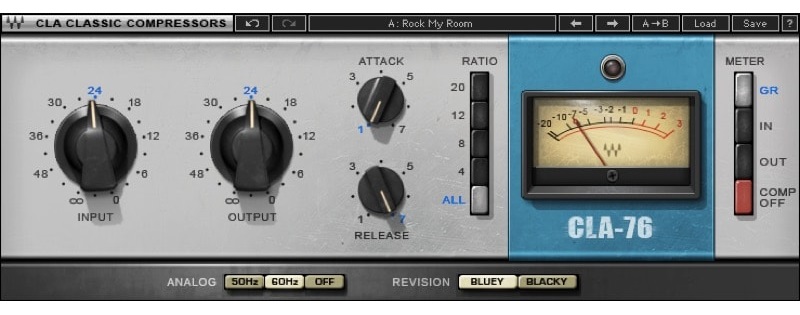
Softube FET Compressor
Despite its aggressiveness and tendency to add some tasty distortion to the source when driven hard, the FET Compressor is an amazingly faithful model of the device loved for its aggressiveness. There is nothing like slamming and abusing this compressor. Nevertheless, there is often room for improvement, so it has a couple of nice features that make the software even more flexible than the original hardware.
Rewritten:
The FET Compressor is known for its aggressive sound and its ability to add tasty distortion to your source when pushed hard. It’s an impressively faithful model of the hardware unit that so many engineers love for exactly that punchy character. There’s nothing quite like slamming this compressor and really pushing it to its limits. Still, there’s always room for improvement, so this software version includes a couple of handy features that make it even more flexible than the original hardware.
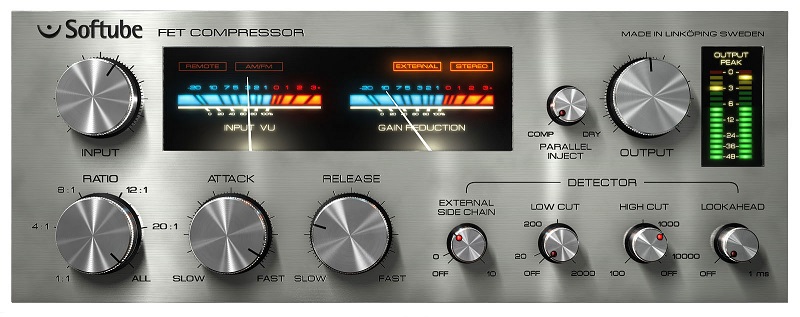
Lindell Audio 7X 500
The 7X 500 is essentially both a compressor and limiter in a single channel. Its FET (field effect transistor) design adds several new features, including a High Pass Sidechain Filter and a Mix Knob, which lets you blend dry and wet signals for parallel compression. The 7X-500 delivers a modern take on the classic “1176 Sound.” When set to a 100:1 ratio (all in), it can be smooth or turn into a true rock ‘n’ roll beast.
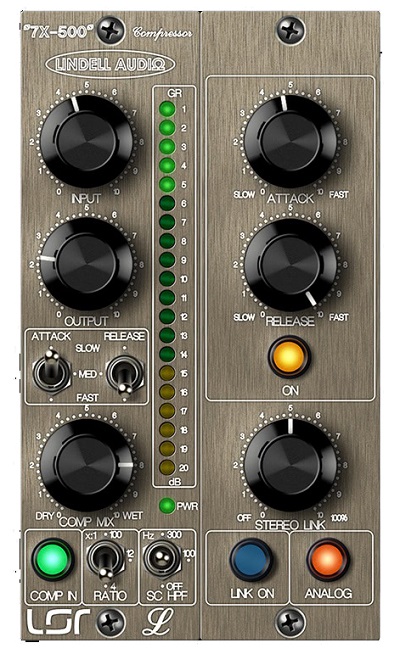
Conclusion
There is a certain similarity between plugin emulators and real hardware units, but plugin emulations tend to lack the musicality and harmonic distortion found in the real hardware. You can push the hardware units much harder than the plugin versions, which results in more pleasing artifacts at the same settings.
However, considering the significant price difference, a good FET plugin should easily meet the needs of most users. FET compressors are especially great for adding character, grit, and color to individual instruments like acoustic guitars, rock vocals, or snare drums.
We’ve covered a lot about these audio compressors, explaining how their gain reduction works, how they control signal levels, and how they process dynamic range. The results you get from compressed signals will vary depending on whether you use, for example, VCA or FET compression—especially when working with different types of audio signals.
If you have any questions about this topic, please leave them in the comment section below. We’ll be happy to answer and discuss it further with you.





